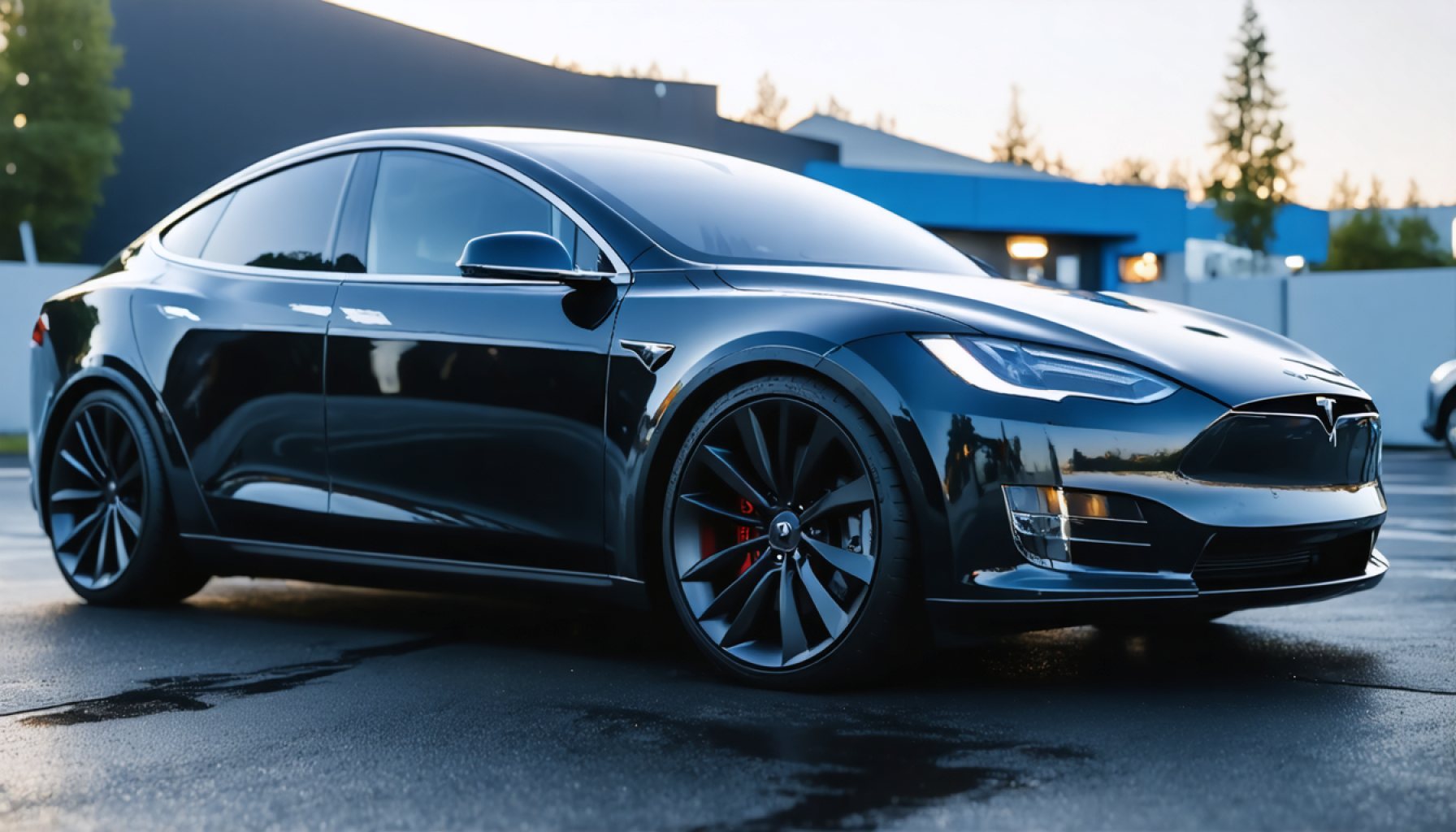- Tesla’s stock has plummeted by 36%, its steepest fall since 2022, causing concern over the company’s future prospects.
- Elon Musk’s dual roles as Tesla CEO and a government efficiency advisor stir controversy and spark protests, affecting Tesla’s brand and investor confidence.
- Market capitalization losses exceed $460 billion, partially due to Musk’s government involvement and geopolitical tensions impacting automotive supply chains.
- Geopolitical issues, such as tariffs on Mexico and China, contribute to market instability and a 10% drop in the Nasdaq.
- Challenges in sales and competition from rivals with autonomous vehicle offerings exacerbate Tesla’s troubles.
- Optimism persists for Tesla’s potential resurgence, with historical rebounds providing hope for the future amidst current investor skepticism.
- The situation underscores the complexity of balancing visionary innovation with inherent risks, especially when leadership roles intersect.
The electric hum of Tesla’s innovation has stalled, as evidenced by its staggering 36% stock free-fall—the steepest since 2022, casting long shadows over the company’s electrifying promises. At the helm is Elon Musk, a figure of towering influence, now straddling the corridors of power as both Tesla’s CEO and a government efficiency tsar under President Trump’s administration. This unique position paints a picture of ambition intertwined with controversy.
In the first months of the year, Tesla lost over $460 billion in market capitalization. This dip, partly tied to Musk’s moonlighting in government, mocks conventional expectations of tech giants powering through crises. As leader of the Department of Government Efficiency or DOGE, Musk champions a crusade against bloated bureaucracy, boasting $140 billion in claimed savings—a figure dwarfed by Tesla’s losses.
Yet, these high-wire acts extend beyond fiscal gymnastics. Protests simmer as Musk’s role in politics intertwines with Tesla’s fortunes, sparking demonstrations and attacks on Tesla storefronts. Some argue that Musk’s dual roles create a clash of interests, straining Tesla’s brand and investor confidence.
Further compounding Tesla’s trials are tariffs slapped on key automotive partners, like Mexico and China. This geopolitical chess game unnerves investors and contributes to a broader tech stock selloff, with the Nasdaq taking a 10% dive, its worst since the market tumult of 2022.
Tesla’s challenges stretch into its core operations too. New vehicle sales are on a downward trajectory, with bold promises of robotaxis still more dreamscape than reality. Rivals accelerate past, capturing the market with tangible autonomous offerings. Musk, however, remains unfazed and continues to peddle optimism regarding a June launch of driverless ride-hailing, even as analysts express doubt over Tesla meeting its ambitious deadlines.
In past volatile spirals, Tesla stock has rebounded with vigor; in 2024, a 29% slide precipitated a year-end rebound. This history of resilience adds a layer of complexity to Musk’s pronouncement at a recent rally—perhaps, for the daring, there lies a buying opportunity amidst the tumult.
The takeaway is as simple as it is enduring: Tesla’s current woes underscore the entangled nature of visionary figures playing dual roles. The broader lesson for investors and onlookers is a classic one—to balance faith in pioneering innovation with the ever-present hum of risk.
Tesla’s Unseen Challenges: Unraveling the Complex Web of Innovation and Controversy
Understanding Tesla’s Recent Stock Decline: A Deeper Dive
Tesla’s recent 36% stock decline raises several critical questions about the company’s strategic direction and the influence of Elon Musk’s dual roles. As Tesla’s CEO and a political figure, Musk balances ambitious innovation with controversial political engagements, contributing to fluctuating market perceptions.
Musk’s Dual Roles: A Boon or Bust?
Elon Musk’s position as head of the Department of Government Efficiency (DOGE) under President Trump’s administration introduces complex intersectionality between government duties and Tesla’s corporate governance. Although Musk boasts $140 billion in government savings, Tesla’s staggering $460 billion drop in market capitalization over a few months dwarfs these figures. The dual roles spark debate about potential conflicts of interest, as political responsibilities may divert Musk’s focus from Tesla.
Impact of Geopolitics on Tesla
Geo-economic tensions, especially tariffs on key partners like Mexico and China, pose significant threats to Tesla’s supply chains. These tariffs exacerbate market jitters, contributing to Tesla’s stock decline and a broader tech stock selloff. Understanding these geopolitical factors is critical for investors considering Tesla’s future.
Tesla’s New Vehicle Sales and Autonomous Driving Challenges
Tesla faces internal operational hurdles, with new vehicle sales dwindling and autonomous driving technology facing skepticism. While Musk promises the launch of driverless ride-hailing services, analysts remain doubtful of Tesla meeting these deadlines. Competitors are making strides with market-ready autonomous features, putting additional pressure on Tesla.
Tesla’s Resilience: Historical Stock Performance
Historically, Tesla has rebounded from stock declines with vigor. For instance, a 29% slide in 2024 led to a year-end recovery. This resilience fosters investor confidence, suggesting potential buy-in opportunities during downturns, although the inherent risks must be considered.
Life Hacks: How to Evaluate Tesla Stock
1. Assess the Market Context: Consider global economic trends, including tariffs and political climates impacting the automotive industry.
2. Monitor Elon Musk’s Public Engagement: Musk’s statements significantly influence Tesla’s market perception. Following his public communications can provide insights into Tesla’s strategic direction.
3. Analyze Competitor Strategies: Keeping a close watch on competitors’ advancements in EV technology and autonomous driving can gauge Tesla’s competitive edge.
Market Forecast and Industry Trends
The electric vehicle market is poised for growth, driven by environmental policies and technological advancements. However, Tesla must navigate these changes amid increasing competition and economic pressures.
Quick Tips for Investors
– Stay Informed: Regularly updating knowledge on geopolitical developments affecting Tesla.
– Diversify Portfolio: Balance Tesla investments with other tech and auto industry players to mitigate risks.
– Review Quarterly Earnings: Analyzing Tesla’s quarterly reports can offer a clearer picture of ongoing performance and potential future directions.
Conclusion
Investing in Tesla is a complex decision requiring awareness of multifaceted risks and innovations. By understanding the geopolitical, operational, and market contexts, investors can make informed decisions. Ultimately, Tesla’s story highlights the need for balancing innovation with operational pragmatism.
For more insights into the electric vehicle market, visit Tesla’s official site.
